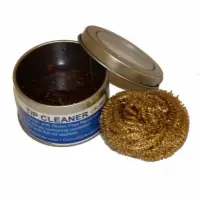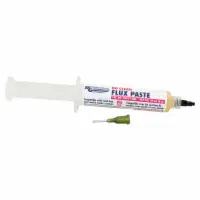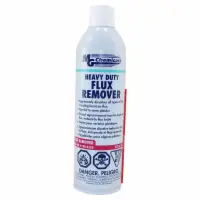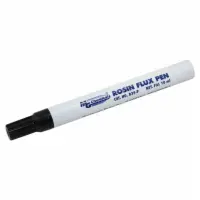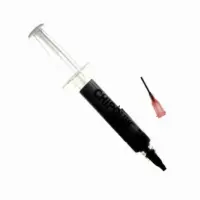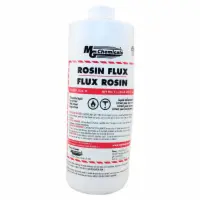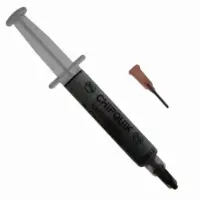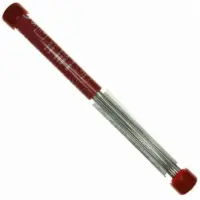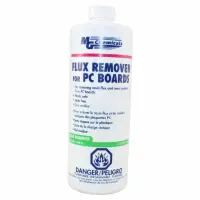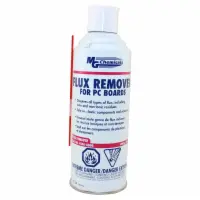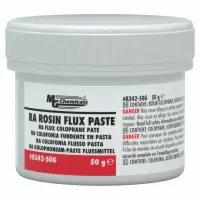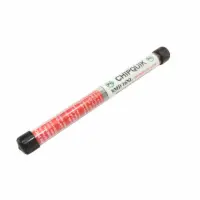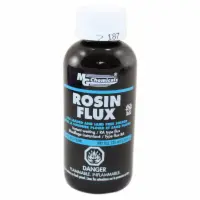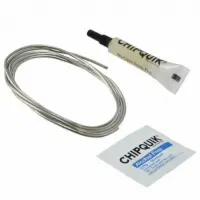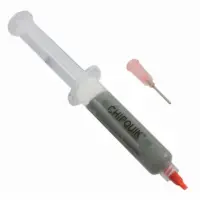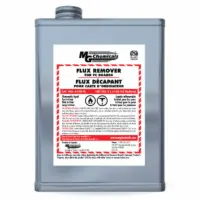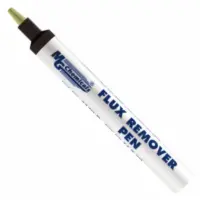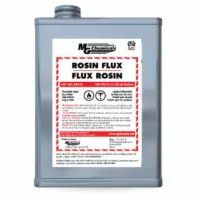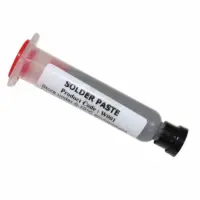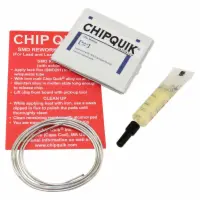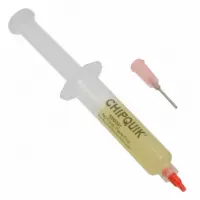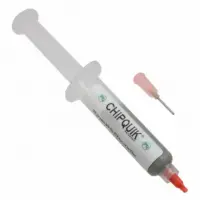Flux & Flux Removers
Filters
Filters
Peruse Circuit Specialists' lineup of inexpensive solder flux and flux removers (liquid and aerosol). Our no-clean liquid rosin flux has superior fluxing ability — after soldering the rosin residue is non-corrosive, non-conductive, and moisture- and fungus-resistant.
Circuit Specialists carries aerosol or liquid flux removers which clean all manner of organic rosin fluxes and ionic soils left over after soldering circuits which feature variable valves that allow you to control the rate of flow.
What is Solder Flux?
Solder flux is a chemical cleaning agent that serves three key purposes in soldering:
- Flux removes oxidated metals and corrosion from the surfaces you’re soldering
- Flux coats and prevents surfaces from further oxidation
- Flux improves the wetting characteristics of solder
Without soldering flux, you run the risk of creating “cold” solder joints, which occur if oxidation is still present on the surfaces you’re soldering. Unclean, oxidized metal surfaces can also cause solder beads, which can short-circuit and damage surrounding components.
Today, solder flux comes in a few different forms, including liquid and paste—some solder wires even contain flux cores. Solder flux also comes in various compositions, depending on the application you’re using it for. For example, it’s important to not confuse solder flux for electronics with acid flux types that are used for plumbing.
Always check that the solder flux you’re purchasing is designed specifically for the project you’re using it for.
Types of Solder Flux for Electronics
Rosin Flux
Rosin flux is made of natural rosin that’s extracted from the sap or resin of pine trees. Rosin contains the active ingredient abietic acid, which naturally cleans and deoxidizes surfaces. Other acid activators might be added to rosin to improve its cleaning abilities. Because of the varying levels of acidic activators, rosin flux actually comes in three key types:
Rosin (R) Flux contains no added acid activators and is ideal for relatively clean surfaces and doesn’t leave residue behind.
Rosin Mildly Activated (RMA) Flux is Rosin flux with additional activators that help it clean dirtier surfaces. Although a stronger cleaner, RMA Flux tends to leave more residue than pure Rosin flux types, so you’ll need to use flux removers or cleaners after the project is complete.
Rosin Activated (RA) Flux is the most activated rosin flux and is the best flux cleaner by far, but will leave significant residue behind that needs to be removed later. Otherwise, the corrosive residue might damage the PCB you’ve soldered.
Water Soluble (Organic Acid Flux)
Organic acid flux—also referred to as water soluble flux—is typically made from glycol bases and is more reactive than rosin-activated flux. Water-soluble flux is a more aggressive oxidizer than rosin-activated flux and usually requires more clean-up afterward because of the leftover residue.
No-Clean Flux
No-Clean flux is made of organic resins (minus rosin) and other inorganic agents. The flux is referred to as “no-clean” either because the residue it leaves behind won’t affect electrical conductivity (requiring no clean-up), or the flux leaves no residue at all.
Solder Flux Forms
Flux comes in different compositions as well as different forms.
Liquid flux is solder flux that, unsurprisingly, comes in liquid form. Liquid flux can help reduce surface tension to help the solder flow more uniformly and freely. For this reason, liquid solder is ideal for low-temperature soldering or wave soldering.
Powder flux is typically only used for specialized applications like brazing (similar to soldering, but with higher temperatures). If you’re soldering electronics, chances are you won’t use powder flux.
Flux Paste or Solder Flux Paste (or simply “Solder Paste”) is a mixture of tiny solder spheres (powdered solder) and flux. The combination of solder and flux into one pasty form allows users to clean and solder pieces together at the same time. It’s commonly used for PCB assembly. Although still in paste form, solder paste can come in small flux paste syringes for better control during application.
Flux Core or Rosin Core Solder is solder wire that has a thin core made of flux, usually rosin. Most modern solder used for PCB and electrical soldering comes with flux at the core. Like the flux paste, by combining solder and flux into one material, the deoxidation and soldering of components can occur at the same time.
Flux Pens are prefilled pens of flux that can be held like a pencil and apply flux in small, controlled movements, much like you would highlight lines on a textbook. Flux pens can be cheaper and more convenient than standard bottles of liquid flux or solder paste.
Flux Removers
Some flux leaves a high amount of residue that, if corrosive enough, can end up short-circuiting, corroding, and ultimately destroying printed circuit boards you’ve soldered. To avoid this unfortunate outcome, spray or liquid flux removers are used after soldering to clean leftover flux residue.
Corrosive or highly activated flux (like RMA or RA Rosin flux) often requires flux remover. Even No-Clean fluxes can leave a residue that, although not harmful, can look unattractive and messy if not cleaned up.

